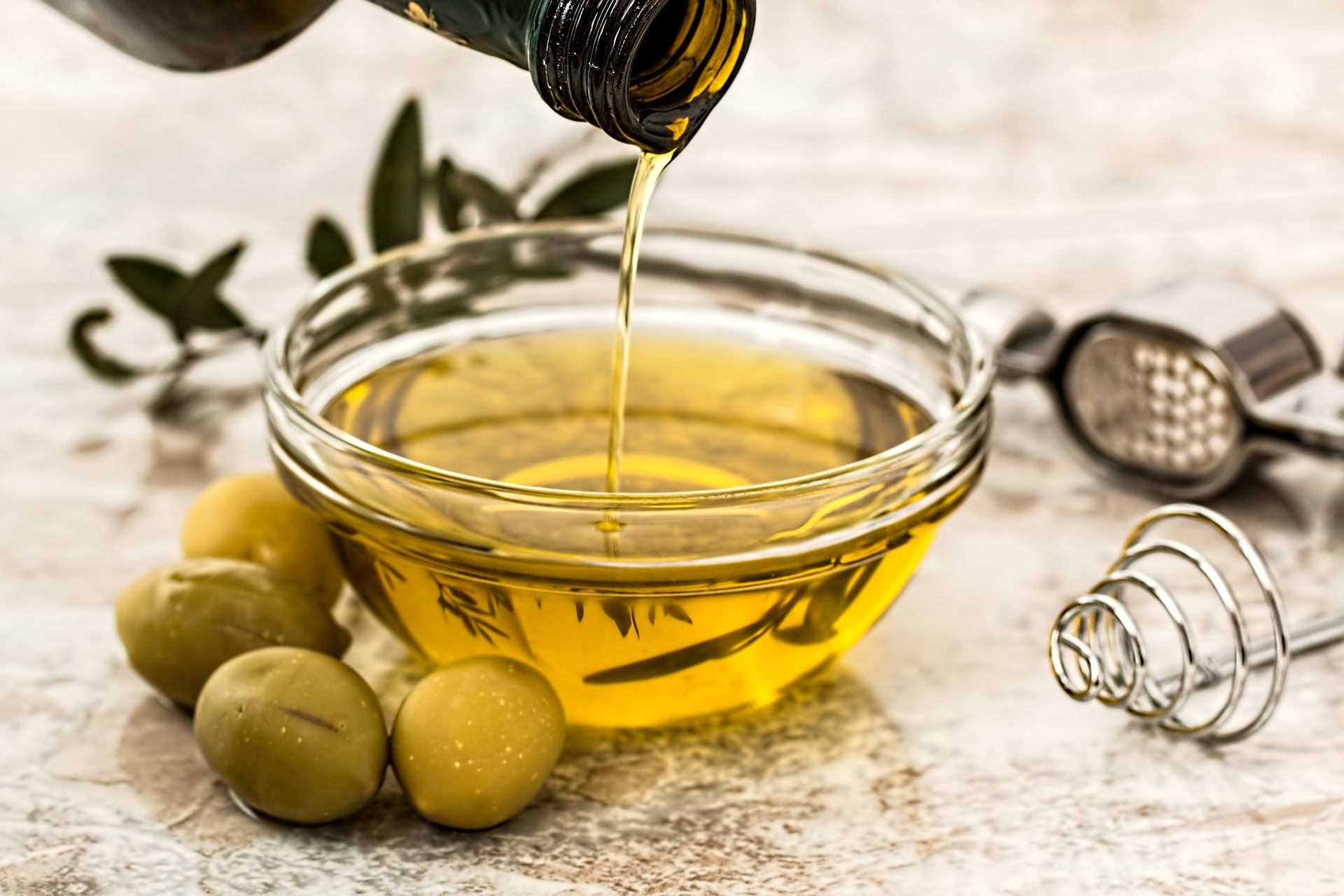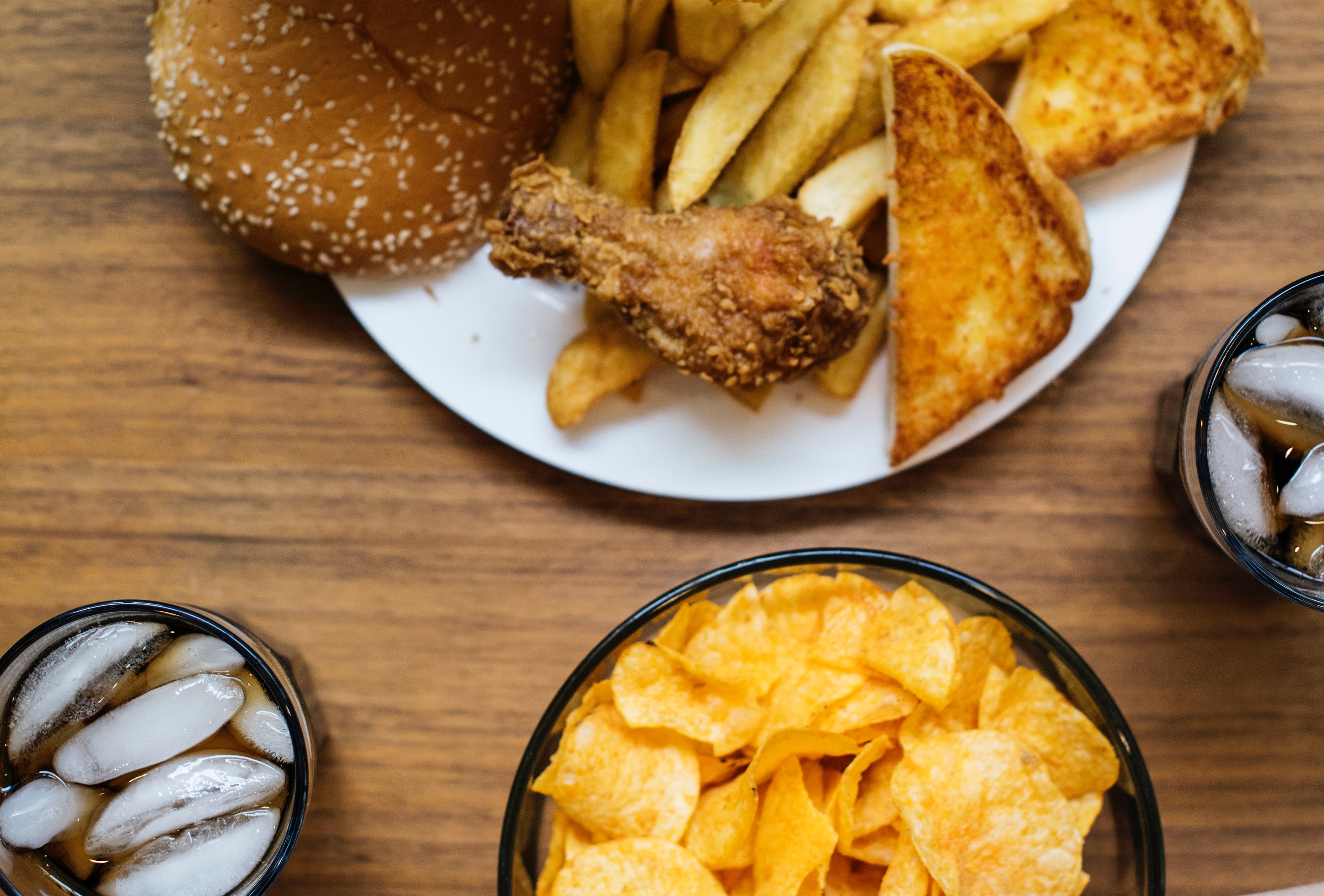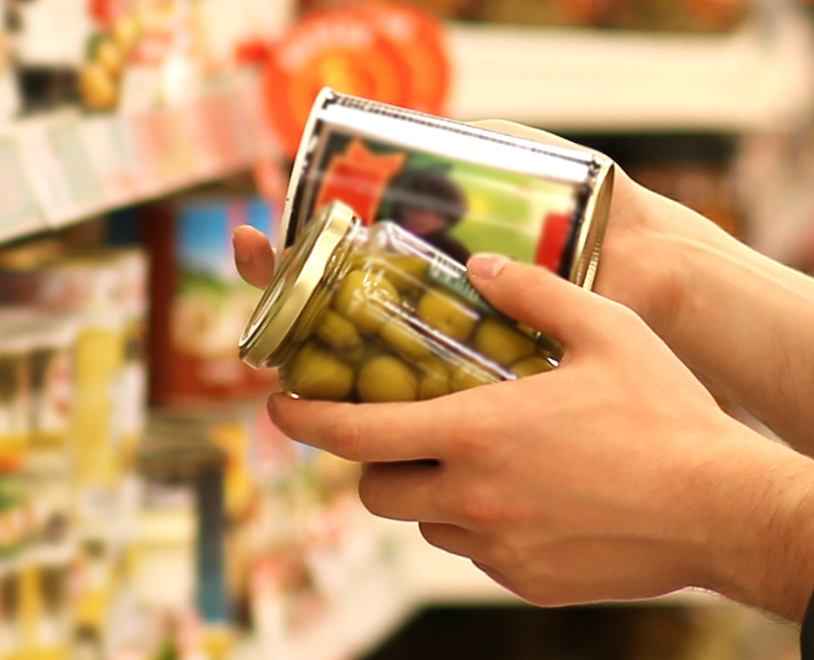
Processed foods are generally thought to be inferior to unprocessed foods. The term may suggest that a packaged food item contains many ingredients, perhaps even artificial colors, flavors, or other chemical additives. Often referred to as convenience or pre-prepared foods, processed foods are suggested to contribute to the obesity epidemic and the rising prevalence of chronic diseases like heart disease and diabetes. However, the definition of processed food varies widely depending on the source:
- The U.S. Department of Agriculture (USDA) defines a processed food as one that has undergone any changes to its natural state—that is, any raw agricultural commodity subjected to washing, cleaning, milling, cutting, chopping, heating, pasteurizing, blanching, cooking, canning, freezing, drying, dehydrating, mixing, packaging, or other procedures that alter the food from its natural state. The food may include the addition of other ingredients such as preservatives, flavors, nutrients and other food additives or substances approved for use in food products, such as salt, sugars, and fats.
- The Institute of Food Technologists includes additional processing terms like storing, filtering, fermenting, extracting, concentrating, microwaving, and packaging. [1]
According to these standards, virtually all foods sold in the supermarket would be classified as “processed” to some degree. Because food begins to deteriorate and loses nutrients as soon as it is harvested, even the apples in the produce aisle undergo four or more processing steps before being sold to the consumer. That’s why in practice, it’s helpful to differentiate between the various degrees of food processing.
Types of Food Processing
A popular system to classify processed foods was introduced in 2009, called the NOVA classification. It lists four categories considering the degree to which a food is processed and the purpose of these modifications: [2-4]
Unprocessed or minimally processed foods

Processed culinary ingredients

Processed foods

Ultra-processed foods
The NOVA system is recognized by the World Health Organization, Food and Agriculture Organization, and the Pan American Health Organization, but not currently in the U.S. by the Food and Drug Administration or USDA. NOVA has been criticized for being too general in classifying certain foods, causing confusion. For example, yogurt may fall into more than one category: plain yogurt is minimally processed, but fruited yogurt with added sweeteners could be labeled either processed or ultra-processed depending on how much sweetener and other chemical additives are incorporated. NOVA also does not provide comprehensive lists of specific foods in each category, so the consumer is left to guess where each may fall.
Is Processed Food Unhealthy?
There’s no doubt that at least some processed foods are found in most people’s kitchens. There are benefits and drawbacks.
Pros
- Frozen, pre-chopped, and canned ingredients can be time-savers in the kitchen.
- Some processed and fortified foods provide important nutrients that may not otherwise be obtained in a busy household or one that has a limited food budget.
- From a nutritional standpoint, processed and even ultra-processed foods can provide key nutrients. Some nutrients, like protein, are naturally retained throughout processing, and others, such as B vitamins and iron, may be added back if they are lost during processing. Fruits and vegetables that are quickly frozen after harvesting can retain the majority of vitamin C.
- Throughout history, foods fortified with specific nutrients have prevented deficiencies and their related health problems in certain populations. Examples include infant cereals fortified with iron and B vitamins to prevent anemia, milk fortified with vitamin D to prevent rickets, wheat flour fortified with folic acid to prevent birth defects and iodine added to salt to prevent goiter.
- Processing by certain methods like pasteurization, cooking, and drying can destroy or inhibit the growth of harmful bacteria. Additives such as emulsifiers preserve the texture of foods, such as preventing peanut butter from separating into solid and liquid parts. Other functions of processing include delaying the spoilage of food; preserving desirable sensory qualities of food (flavor, texture, aroma, appearance); and increasing convenience in preparing a complete meal.
- Therefore, the indispensable role of food processing enables us to have a stable and predictable food supply and maintains food and nutrient security.
Cons
Depending on the degree of processing, nutrients can be destroyed or removed. Peeling outer layers of fruits, vegetables, and whole grains may remove plant nutrients (phytochemicals) and fiber. Heating or drying foods can destroy certain vitamins and minerals. Although food manufacturers can add back some of the nutrients lost, it is impossible to recreate the food in its original form.
Currently, bread and frozen meals are some of the most consumed ultra-processed foods in the U.S. [5] While these products can be good sources of whole grains, fiber, vitamins, and minerals, they can also be high in sodium, added sugars, and saturated fats. Given the variety of ultra-processed foods, it may be helpful to distinguish those with lower nutritional value from the broader category. Such distinction can be determined by evaluating a food’s nutritional content and long-term health effects. A product with an unevenly high ratio of calories to fiber and healthy nutrients (e.g., unsaturated fats, B vitamins, potassium) may be considered an “ultra-processed food of low nutritional value.” For example, soda provides high calories from added sugars and no healthy nutrients; and research supports an association between a high intake of sugar-sweetened beverages and an increased risk of obesity, diabetes, and heart disease. On the other hand, whole-grain bread and fiber-containing low-sugar breakfast cereals that may be fortified with nutrients such as folic acid have consistently been linked with lower rates of stroke. [6]
To help illustrate the spectrum of food processing, the table below includes ultra-processed foods of low nutritional value as its own category. We also we separate the NOVA categories of “unprocessed” and “minimally processed” foods, and omit NOVA’s “processed culinary ingredients” category, which mainly includes supplementary food components to assist in cooking and food preparation.
| Unprocessed foods | Minimally processed foods | Processed foods | Ultra-processed foods | Ultra-processed foods of low nutritional value |
| Whole apple | Prepackaged apple slices with no additives | Unsweetened applesauce made with apples, water, and ascorbic acid to prevent browning | Sweetened applesauce that contains the prior ingredients plus high fructose corn syrup | Apple juice drink with high fructose corn syrup and added coloring |
| Whole oat groats
| Steel-cut oats, rolled oats | Instant oats with added sugar and a preservative only to enhance freshness | Instant flavored oatmeal with added sugar, artificial flavorings, and other additives to improve texture and freshness | Low-fiber packaged oat-containing cookie (mostly made of refined flour and sugar) |
| Dried chickpeas | Chickpea flour made from dried finely ground chickpeas; chickpea pasta | Canned chickpeas;
store-bought hummus made with chickpeas, spices, and oil without preservatives | Store-bought hummus made with chickpeas, salt, spices, and artificial flavors | “Chickpea” chips that are made with mostly rice or potato flour and are high in added salt and oils |
| Peanuts in the shell | Shelled plain peanuts | Natural peanut butter made with only peanuts and salt | Peanut butter with added sugar, salt, and emulsifiers | Peanut butter candy |
| Homemade veggie burger made with brown rice, lentils, sweet potato, and cooked kale | Packaged frozen veggie burgers or plant-based meat substitutes with added salt and seasonings; a good source of protein and fiber | |||
| Homemade or store-bought plain yogurt with only pasteurized milk | Store-bought plain yogurt made with pasteurized milk, live active cultures, and food starch (thickener) | Yogurt with a small amount of added sugar, and pectins and gums to thicken/emulsify; a good source of protein and calcium | Yogurts higher in added sugars or fruit concentrates, artificial flavors, and gums to thicken/emulsify; not a significant source or protein or calcium | |
| Fresh fish | Unseasoned frozen fish filets | Canned or frozen or fresh fish with seasoning | Breaded fish sticks |

Decoding the ingredients list on a food label
- The ingredients are listed in order of quantity by weight. This means that the food ingredient that weighs the most will be listed first, and the ingredient that weighs the least is listed last. [7]
- Some ingredients like sugar and salt may be listed by other names. For example, alternative terms for sugar are corn syrup, high-fructose corn syrup, honey, agave nectar, cane sugar, evaporated cane juice, coconut sugar, dextrose, malt syrup, molasses, or turbinado sugar. Other terms for sodium include monosodium glutamate or disodium phosphate.
- If the food is highly processed, it may contain several food additives such as artificial colors, flavors, or preservatives. Their ingredient names may be less familiar. Some preservatives promote safety of the food by preventing growth of mold and bacteria. Others help prevent spoilage or “off” flavors from developing. Examples that you may see on the label include:
- Preservatives—ascorbic acid, sodium benzoate, potassium sorbate, tocopherols
- Emulsifiers that prevent separation of liquids and solids—soy lecithin, monoglycerides
- Thickeners to add texture—xanthan gum, pectin, carrageenan, guar gum
- Colors—artificial FD&C Yellow No. 6 or natural beta-carotene to add yellow hues
- Fortified foods contain vitamins and minerals that are added after processing. Either these nutrients were lost during processing, or they were added because they are lacking in the average diet. Examples include B vitamins (riboflavin, niacin, niacinamide, folate or folic acid), beta carotene, iron (ferrous sulfate), vitamin C (ascorbic acid), vitamin D, or amino acids to boost protein content (L-tryptophan, L-lysine, L-leucine, L-methionine).
Ingredients used widely in the production of ultra-processed foods such as saturated fats, added sugar, and sodium have become markers of poor diet quality due to their effect on heart disease, obesity, and high blood pressure. [8,9] It is estimated that ultra-processed foods contribute about 90% of the total calories obtained from added sugars. [5]
The Bottom Line
Food processing is a very broad spectrum that ranges from basic technologies like freezing or milling, to the incorporation of additives that promote shelf stability or increase palatability. As a general rule, emphasizing unprocessed or minimally processed foods in the daily diet is optimal. That said, the use of processed and even ultra-processed foods is the choice of the consumer, and there are pros and cons that come with each type. The Nutrition Facts Label and ingredients list can be useful tools in deciding when to include a more processed food in one’s diet. There is evidence showing an association with certain types of food processing and poor health outcomes, especially low-nutrient ultra-processed foods that contain added sugars, excess sodium, and unhealthful fats. But there also exist ultra-processed foods that have low amounts of these ingredients while being fortified in beneficial nutrients such as calcium, protein, fiber, and vitamins B and D.
Research is still clarifying if any harmful health effects from ultra-processed foods arise from the higher degree of processing or simply from the poorer nutritional quality often accompanying these types of foods. There is a growing range of processed and ultra-processed foods available, and some products may be a useful addition to a healthful diet.
Put it into practice: Ideas for a day of minimally-processed meals
You don’t have to avoid all processed foods but begin by adding more fresh or minimally processed ingredients to your shopping cart. More time may be needed to prepare these foods than just opening a can or popping a frozen container in a microwave, but the rewards may be fresher flavors, increased nutrients, and eating less additives that have no nutritional benefit.
Breakfast:
- Look for breads that include whole grain flour as the main ingredient (it should be listed first) and that contain minimal additives and preservatives.
- Swap out butter spreads for mashed avocado or nut/seed butters.
- Choose breakfast cereals with less added sugar, such as plain steel-cut or large flake oats, plain shredded wheat, and low-sugar mueslis. Add nuts, chia seeds, or flaxseeds and fresh diced fruit to cereals for a heartier meal.
Lunch/Dinner:
- Reduce takeout and prepare more home-cooked meals using fresh ingredients or processed frozen or canned ingredients that are low in added sugar, sodium, and saturated fat.
- Choose fresh poultry and fish, dried or low-sodium canned legumes, dry or frozen plain whole grains (brown or wild rice, farro, millet, quinoa), fresh or frozen unseasoned vegetables, and herbs, spices, and vinegars.
- Cook in bulk and freeze extra food so that you have meals ready to reheat when you are bus Dinner leftovers make a great next-day lunch! If you are not used to cooking at home, it may require some planning ahead and experimentation at first.
Snacks:
- Try fresh washed and sliced fruits, raw sliced vegetables with hummus, plain or low-sugar yogurt, unsalted nuts, roasted chickpeas or other beans, edamame, overnight oats, or homemade trail mix with nuts, seeds, and dried fruit.
Beverages: Your body appreciates plain water! Try it chilled with ice, warmed, or infused with fresh mint, slices of citrus fruit, or a piece of ginger.
Restaurants:
- Bypass the usual highly processed fast-food options of fried chicken, burgers, and fries. Visit eateries that offer fresh vegetables or salads; lean fresh protein foods like fish, poultry, tofu, or legumes; and whole grains that are simply prepared without excess salt and fat.
- Research menus online when available, to save time when making food selectio
Last reviewed August 2023

